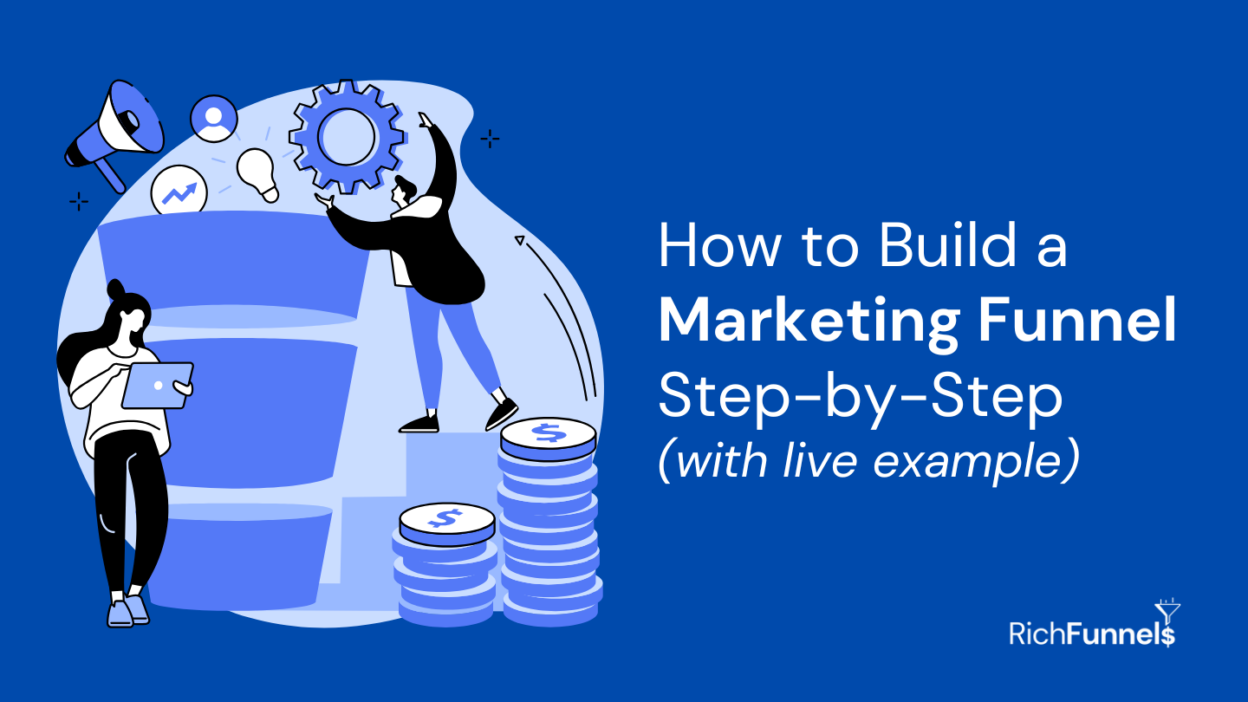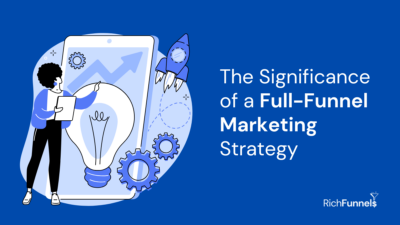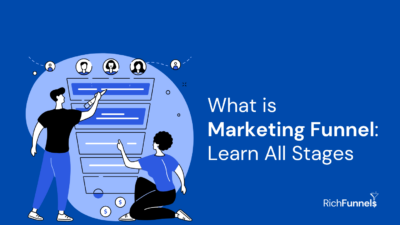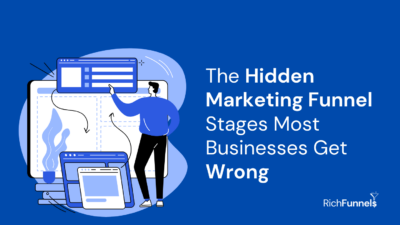A well-structured marketing funnel helps convert potential customers into loyal clients. This guide will take you through each step of creating a highly effective marketing funnel for your online business.
1. Understanding the Marketing Funnel
A marketing funnel represents the customer journey, from discovering your brand to making a purchase. The key stages include:
- Awareness: The customer learns about your brand.
- Interest: They explore your offerings.
- Consideration: They evaluate your products/services.
- Conversion: They make a purchase.
- Retention: They become repeat customers.
2. Identifying Your Target Audience
Before building your funnel, define your ideal customer. Conduct market research, analyze competitors, and create customer personas. Understand your audience’s pain points, interests, and behavior to tailor your funnel for better conversions.
3. Generating Leads (Creating Awareness)
Attracting potential customers is the first step. Methods include:
- Content Marketing (blogs, videos, infographics)
- Social Media Marketing (Facebook, Instagram, LinkedIn)
- Paid Advertising (Google Ads, Facebook Ads)
- Search Engine Optimization (SEO) (using targeted keywords)
These strategies help you attract people searching for solutions.
4. Capturing Leads with Lead Magnets
Once visitors arrive on your site, capture their contact information through lead magnets, such as:
- Free eBooks
- Webinars
- Discount Coupons
- Free Trials
- Checklists or Templates
Use landing pages with persuasive CTAs (Call-to-Action) to encourage sign-ups.
5. Nurturing Leads with Email Marketing
Once you’ve captured leads, nurture them through email marketing. Set up automated email sequences that include:
- A welcome email introducing your brand
- Educational content addressing their pain points
- Case studies and testimonials to build trust
- Product promotions and exclusive offers
Consistent engagement moves leads further down the funnel.
6. Providing Value Through Content Marketing
Keep your audience engaged with high-quality content. Examples include blog posts, YouTube videos, podcasts, and social media updates.
- Awareness Stage: Informative content (guides, explainer videos)
- Interest Stage: Tutorials and solutions to problems
- Decision Stage: Case studies, comparisons, testimonials
Great content builds trust and encourages conversions.
7. Retargeting Visitors Who Didn’t Convert
Not everyone converts on the first visit. Use retargeting strategies like:
- Facebook Pixel for social media retargeting
- Google Remarketing Ads to reach previous website visitors
Retargeting reminds potential customers of your offerings and encourages conversions.
8. Creating a High-Converting Sales Page
Your sales page should be optimized for conversions. Key elements include:
- A compelling headline
- Clear product descriptions
- Customer testimonials and case studies
- High-quality images and videos
- Strong CTAs (e.g., “Buy Now” or “Sign Up Today”)
Ensure the page is mobile-friendly and easy to navigate.
9. Making an Irresistible Offer
A compelling offer can significantly boost conversions. Consider:
- Limited-time discounts to create urgency
- Bonus products to add value
- Risk-free money-back guarantees to reduce hesitation
- Free shipping to simplify the decision
10. Simplifying the Checkout Process
A complex checkout process leads to cart abandonment. Improve conversions by:
- Reducing the number of steps
- Offering multiple payment options
- Allowing guest checkout
- Displaying security badges for trust
A smooth checkout process ensures a hassle-free purchase.
11. Implementing Upselling and Cross-Selling
Increase revenue per customer with:
- Upsells: Offering premium versions or add-ons
- Cross-sells: Recommending complementary products
For example, if a customer buys a camera, offer a lens or tripod at a discount.
12. Following Up After the Sale
A strong follow-up strategy builds customer loyalty. Send:
- Thank-you emails expressing gratitude
- Product usage guides for better experience
- Discount offers for future purchases
Engaged customers are more likely to buy again.
13. Collecting Customer Reviews & Testimonials
Positive reviews build trust and credibility. Encourage satisfied customers to leave reviews on:
- Trustpilot
- Your website
Use testimonials in marketing campaigns to attract more buyers.
14. Testing & Optimizing Your Funnel
Continuous optimization improves results. Conduct A/B tests for:
- Headlines and CTAs
- Email subject lines
- Ad creatives
- Landing page designs
Analyze data and tweak elements to maximize conversions.
15. Tracking Performance with Analytics
Monitor key metrics using:
- Google Analytics (website traffic, conversion rates)
- Facebook Ads Manager (ad performance)
- Email marketing platforms (open rates, click-through rates)
Use insights to refine your funnel strategy.
16. Scaling Your Funnel for Growth
Once optimized, scale your funnel by:
- Increasing ad spend on high-performing campaigns
- Expanding to new marketing channels
- Automating repetitive tasks
- Launching new products/services
A scalable funnel accelerates business growth.
Building an effective marketing funnel takes strategy, testing, and optimization. By following these 16 steps, you can attract more leads, nurture customer relationships, and drive consistent sales. Apply these tactics to grow your brand and boost revenue.
FAQs
1. What is a marketing funnel, and why is it important? A marketing funnel is a structured journey that guides potential customers from awareness to purchase. It helps systematically convert leads into paying customers.
2. What are the common stages of a marketing funnel?
- Awareness: Attracting potential customers through ads, SEO, and content marketing.
- Interest: Engaging them with valuable content and lead magnets.
- Decision: Providing solutions, discounts, and testimonials to encourage purchase.
- Action: Converting leads into customers and ensuring repeat business.
3. What tools do I need to build a successful marketing funnel?
- Landing Page Builders (e.g., ClickFunnels, Leadpages)
- Email Marketing Tools (e.g., Mailchimp, ConvertKit)
- CRM Software (e.g., HubSpot, Salesforce)
- Analytics & Tracking Tools (e.g., Google Analytics, Hotjar)
- Ad Platforms (e.g., Facebook Ads, Google Ads)
4. How can I optimize my funnel for better conversions?
- Write compelling copy and strong CTAs.
- A/B test landing pages and emails.
- Segment audiences for personalized marketing.
- Use retargeting ads to follow up with leads.
- Analyze data and adjust based on insights.





